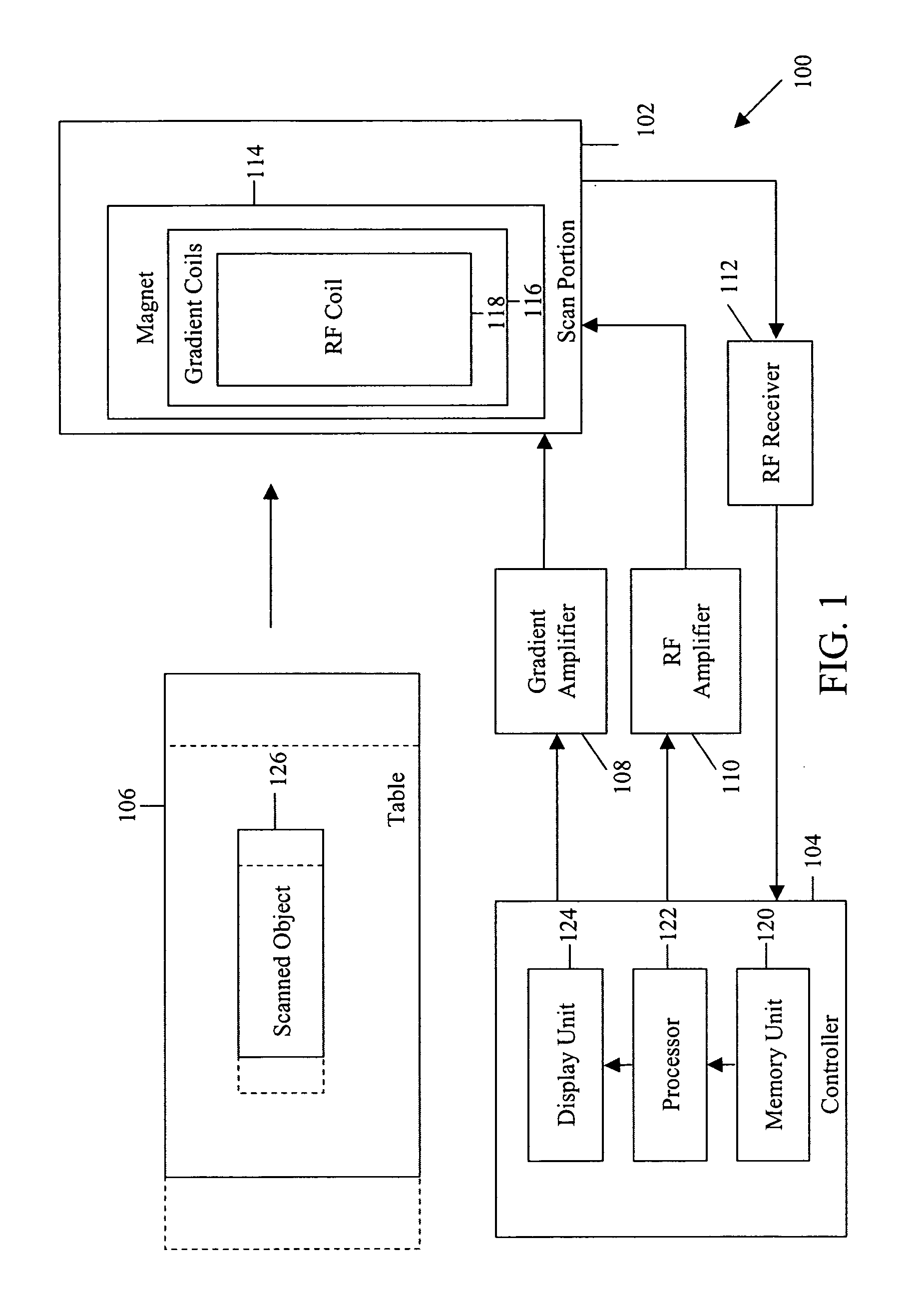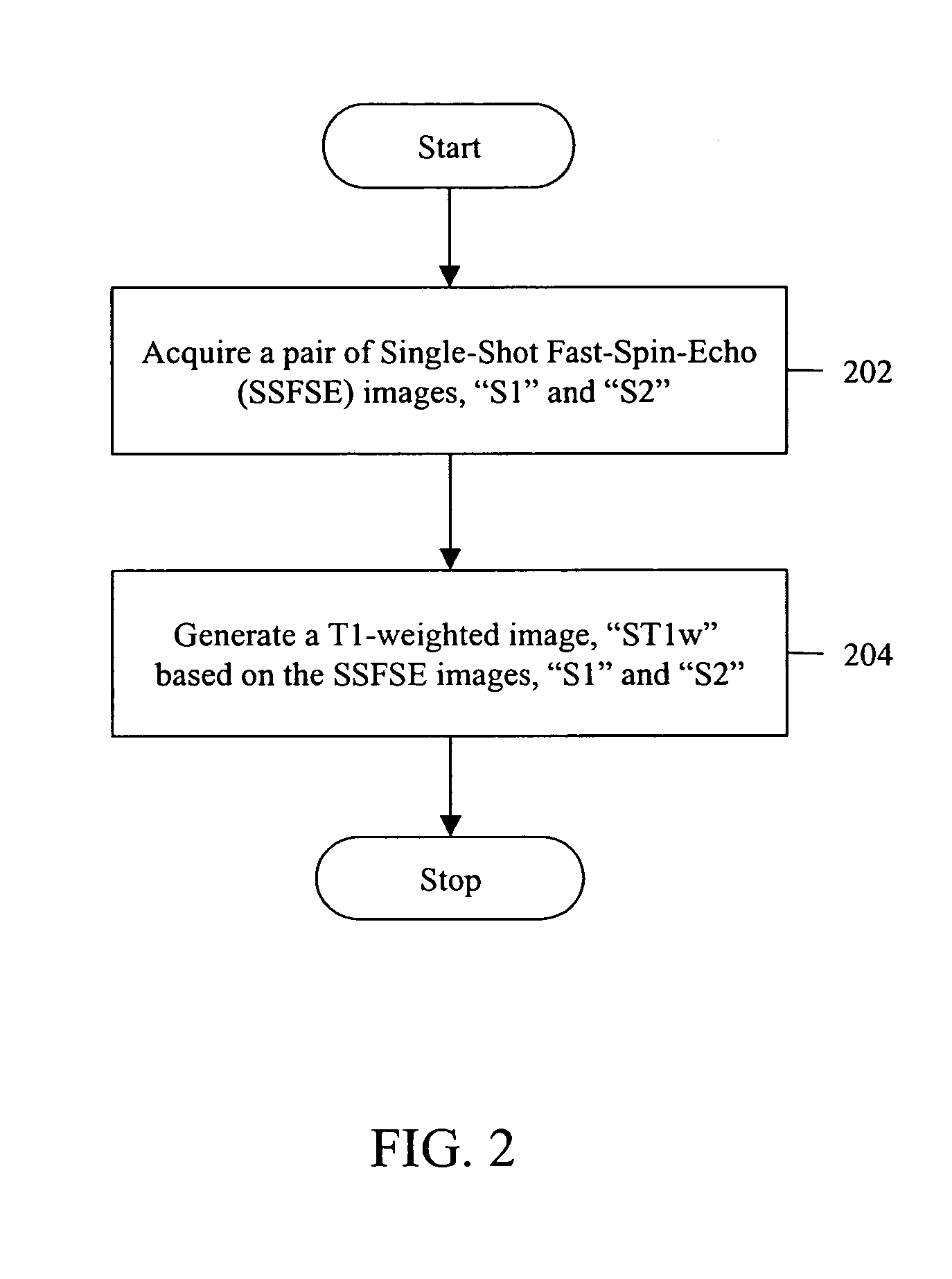Method for generating T1-weighted magnetic resonance images and quantitative T1 maps
a magnetic resonance image and quantitative technology, applied in the field of medical imaging systems, can solve the problems of poor signal-to-noise ratio (snr), long scan time, and inconvenient use of fetal brain long scans
- Summary
- Abstract
- Description
- Claims
- Application Information
AI Technical Summary
Benefits of technology
Problems solved by technology
Method used
Image
Examples
Embodiment Construction
[0015]Various embodiments of the invention provide a method and system for generating T1-weighted Magnetic Resonance (MR) images and quantitative T1 maps. The method is performed by acquiring a pair of Single-Shot Fast-Spin-Echo (SSFSE) images.
[0016]FIG. 1 is a block diagram of an MRI system 100, in which various embodiments of the invention can be implemented. MRI system 100 generally includes a scan portion 102, a controller 104, a table 106, a gradient amplifier 108, an RF amplifier 110, and an RF receiver 112. Scan portion 102 includes a magnet 114, a set of gradient coils 116, and an RF coil 118. Controller 104 includes a memory unit 120, a processor 122 and a display unit 124.
[0017]In an embodiment of the invention, an object 126 (e.g., a patient) to be scanned is placed on table 106. MRI data of object 126 is obtained by scan portion 102. This is achieved through the application of a magnetic field generated by magnet 114, a plurality of magnetic gradient fields, along x, y, ...
PUM
 Login to View More
Login to View More Abstract
Description
Claims
Application Information
 Login to View More
Login to View More - R&D
- Intellectual Property
- Life Sciences
- Materials
- Tech Scout
- Unparalleled Data Quality
- Higher Quality Content
- 60% Fewer Hallucinations
Browse by: Latest US Patents, China's latest patents, Technical Efficacy Thesaurus, Application Domain, Technology Topic, Popular Technical Reports.
© 2025 PatSnap. All rights reserved.Legal|Privacy policy|Modern Slavery Act Transparency Statement|Sitemap|About US| Contact US: help@patsnap.com



